The maps on the pages that follow show political boundaries within Europe at six important stages in the roughly three hundred and fifty years covered by this Encyclopedia: 1453, 1520, 1648, 1715, 1763, and 1795.
Xxill
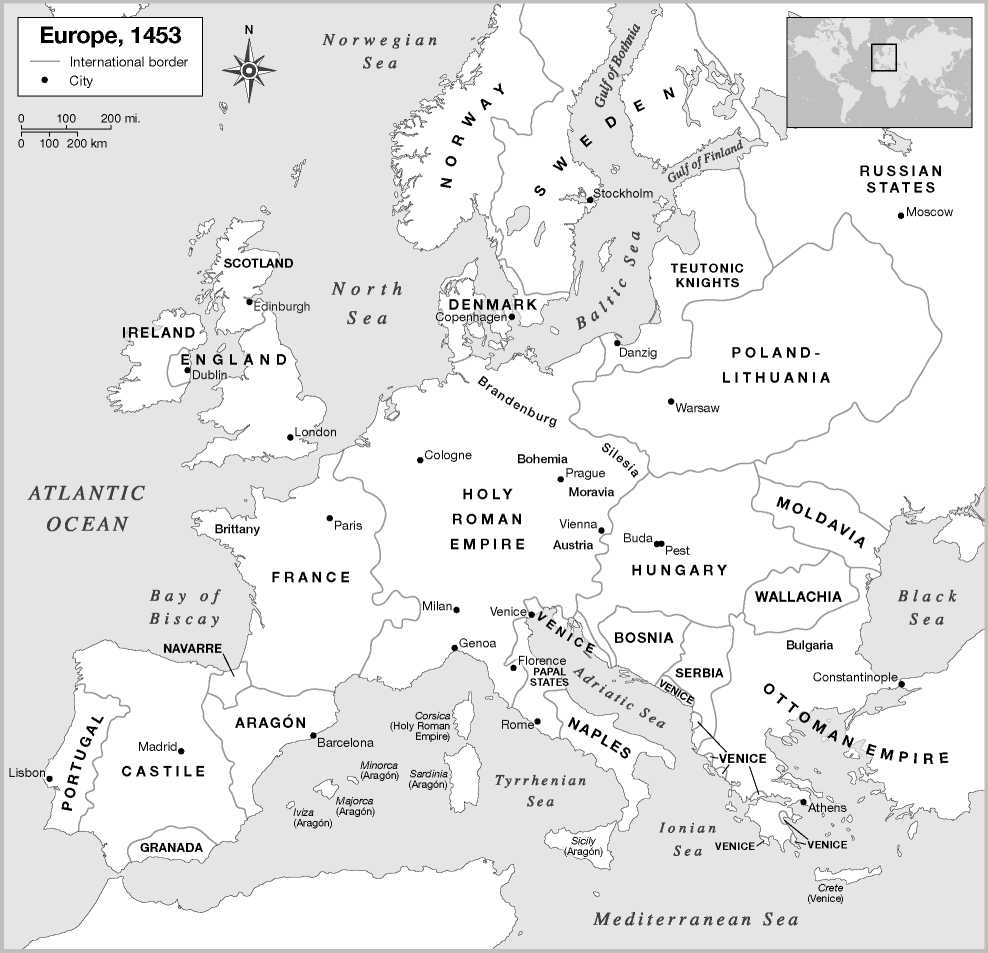
1453. In the years around 1450, Europe settled into relative political stability, following the crises of the late Middle Ages. France and England concluded the Hundred Years’ War in 1453; the Ottoman Turks conquered Constantinople in the same year and established it as the capital of their empire; and in 1454 the Treaty of Lodi normalized relations among the principal Italian states, establishing a peaceful balance of power among Venice, Florence, the duchy of Milan, the Papal States, and the Kingdom of Naples.

1520. In 1520, the Habsburg prince Charles V was elected Holy Roman emperor, uniting in his person lordship over central Europe, Spain, the Low Countries, parts of Italy, and the newly conquered Spanish territories in the Americas. For the next century, this overwhelming accumulation of territories in the hands of a single dynasty would remain the most important fact in European international politics. But in 1520 Habsburg power already faced one of its most troublesome challenges: Martin Luther’s Reformation, first attracting widespread notice in 1517, would repeatedly disrupt Habsburg efforts to unify their territories.
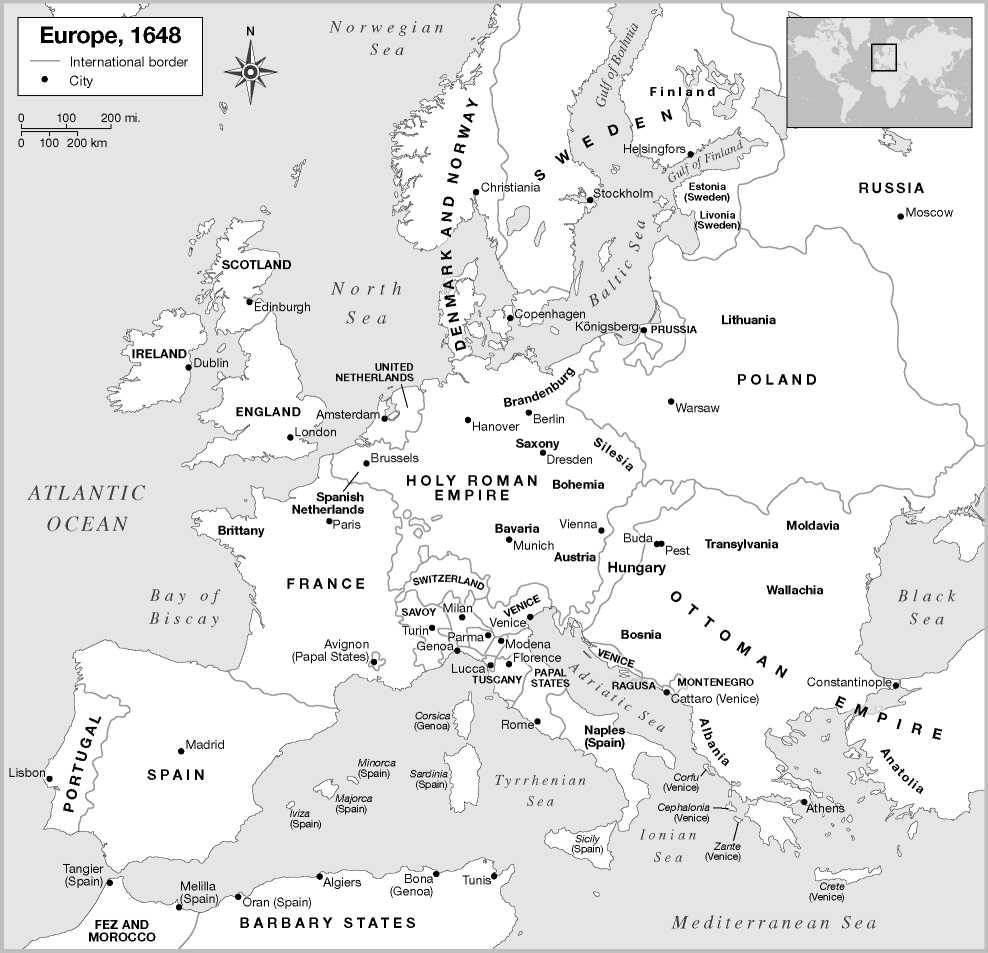
1648. The 1648 Peace of Westphalia ended the Thirty Years’ War, one of the most destructive wars in European history. The peace treaty formally acknowledged the independence of the Dutch Republic and the Swiss Confederation, and it established the practical autonomy of the German principalities—including the right to establish their own religious policies. Conversely, the Holy Roman Empire lost much of its direct power; although its institutions continued to play some role in German affairs through the eighteenth century, the emperors’ power now rested overwhelmingly on the Habsburg domain lands in Austria, Bohemia, and eastern Europe.
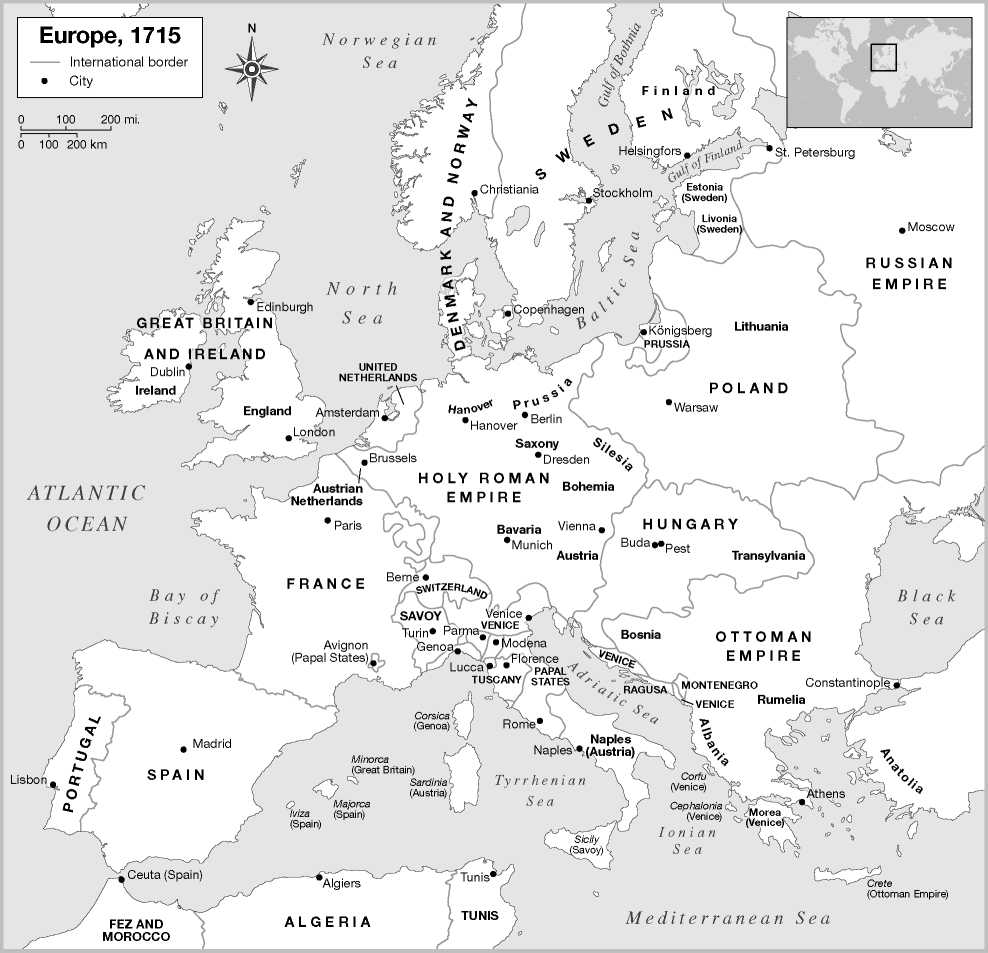
1715. The Peace of Utrecht (1713) ended the War of the Spanish Succession, the last and most destructive of the wars of the French king Louis XIV. The treaty ended Spain’s control over present-day Belgium and over parts of Italy, and it marked the end of French hegemony within Europe. In the eighteenth century, France would be only one of five leading powers.
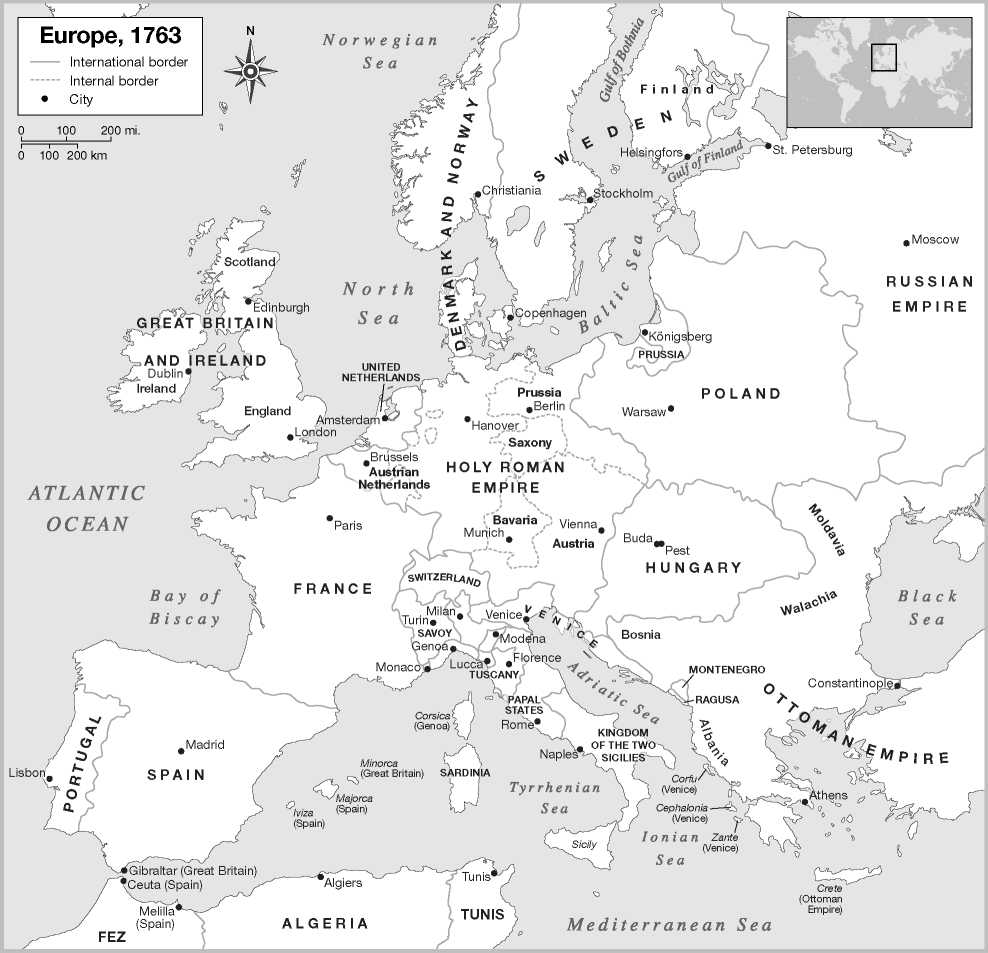
1763. The 1763 Treaty of Paris ended the Seven Years’ War, a war that involved all the major European powers and included significant campaigns in North America and southern Asia, as well as in Europe. The war made clear the arrival of Prussia as a great power, at least the equal of Austria in central and eastern Europe.
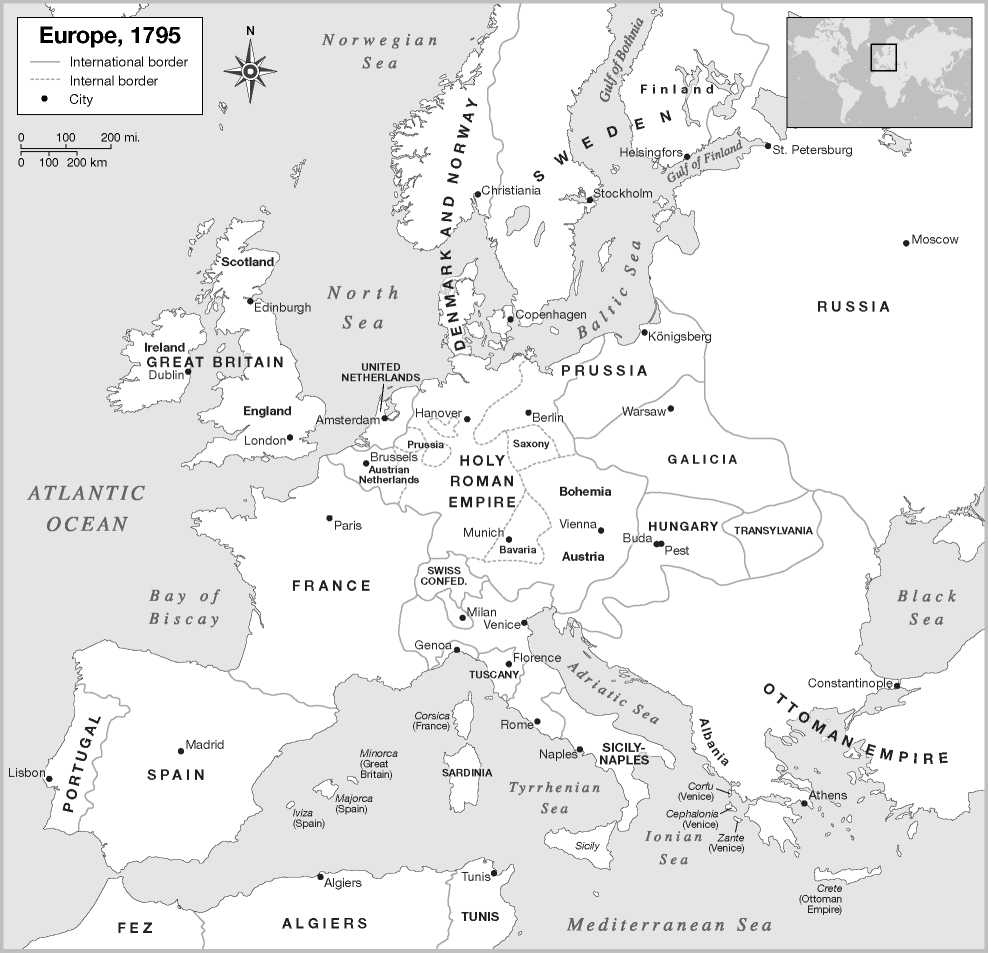
1795. By 1795, French armies had repelled an attempted invasion by Prussia, Austria, and England, and France had begun annexing territories in Belgium and western Germany. These military successes ensured the continuation of the French Revolution, but they also meant that European warfare would continue until 1815, when the modern borders of France were largely established. Warfare with France did not prevent the other European powers from conducting business as usual elsewhere: with agreements in 1793 and 1795, Prussia, Austria, and Russia completed their absorption of Poland.





 World History
World History









